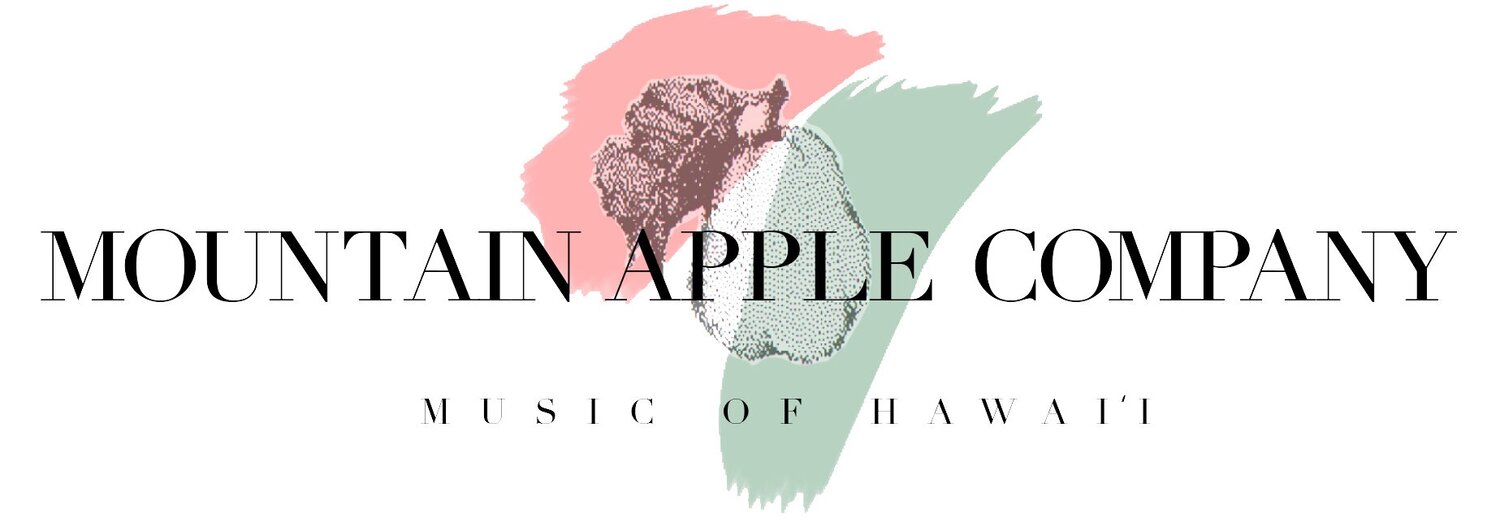Iāʻoe E Ka Lā - Vol. Three - 1977
Palani Vaughan sings in honor of Hawaiʻi’s King David Kalākaua as he fondly recalls the “footprints” of the Renaissance Monarch
KING KALĀKAUA, KA MŌʻĪ HIOPE HOPE:
King Kalākaua was a colorful and memorable figure in the saga of Hawaiʻi's monarchial history. He was the monument builder who had ʻIolani Palace constructed; the last King of Hawaiʻi; the first leader of any nation in history to tour the world; the father of Hawaiian music; the revivalist of ancient Hawaiian tradition, sports, arts, and lore; the concerned King who had become "father" of a young, growing, industrializing nation, whose native children had diminished considerably in numbers (from approximately 250,000 to 400,000 in 1778, to approximately 14,000 before 1874) by the time he became King; therefore, a benevolent King, who dedicated his reign to strengthening and preserving his dying nation; he contemporary man, who, although, encouraged the introduction of new industries, ideas, improvements and inventions to nurture economic prosperity for his nation, had insisted that the value of traditional Hawaiian ideals accompany this growth; the man of two worlds who could carry himself with dignity and royal bearing anywhere he travelled, yet, who could relate effectively to his own Hawaiian people; a 33rd Degree Mason by 1878, who upon his death in San Francisco, California, had undergone a brief portion of the ceremony initiating him into Islam Temple of the AAONMS (Ancient and Accepted Order of the Nobles of the Mystic Shrine, a masonic-related agency); a researcher and writer, who published in 1888, his Legends and Myths of Hawaiʻi and who had researched and recorded the Hawaiian creation chant called “Kumulipo"; the revivalist of the Hawaiian spiritual sciences and genealogist, when he organized and led the secret Hale Naua (or Nauwā) Society; dedicated to revitalizing the health of his nation and encouraged documentation of medicinal practices of traditional Hawaiian"kahuna lapaʻau'“ (medical doctors, or priests), while his legislature sought the publication of Walter Murray Gibson's Sanitary Instructions for Hawaians; the far-seeing King who sent Hawaiian youths abroad including his prince-nephews and princess-niece, to be educated in California, Japan, England and France in preparation for their roles as future leaders of the Hawaiian kingdom; the King who possessed far-sighted leadership qualities that kindled interest among many Pacific island nations to become Hawaiʻi protectorates; the man of letters who had gained the respect and faithful friendship of the poet-writer of world-renown, Robert Louis Stevenson; the nationalist King of Hawaii who inspired patriotism and rekindled the spirit of nationalism by composing the Hawaiian National Anthem, “Hawaiʻi Ponoʻī” now the Hawaii state anthem; the influential King whose presence in Washington, D.C., in 1874, gained favorable treatment by the American government for the struggling sugar industry in Hawaii; a gentleman, scholar, musician, song-writer, spiritualist, mystic, genealogist, protector, revivalist, sports enthusiast, traditionalist, modernist, the King of Hawaiʻi.
“Aloha aʻe ana mākou I ke eau wāwae o ka lani” - “We will fondly remember the footprints of the King” (Chant for Kalākaua)
Track List
ʻEkāhi 1. Lahaina-Kaʻanapali Train: (Palani Vaughan)
ʻElua 2. E Kuʻu Makamae: (Palani Vaughan)
ʻEkolu 3. Na Makamaka O ʻIolani: (Palani Vaughan)
ʻEhā 4. Kalamakaʻa: (Palani Vaughan)
ʻElima 5. Ka Huliau ʻAna: (Palani Vaughan)
ʻEono 6. Bless our Homeland Forever: (Palani Vaughan)
ʻEhiku 7. Ka Māmakakaua: (Palani Vaughan)
ʻEwalu 8. Voices on the Wind: (Palani Vaughan)
ʻEiwa 9. E Ala (Ola) Kākou: (Palani Vaughan)
ʻUmi 10. Kilipati Hula: (Palani Vaughan)
῾Umikūmākahi 11. Ipo Lei Manu: (Queen Kapiʻolani)
ʻUmikūmālua 12. Nalohia Ka Makua: (Palani Vaughan)
Musicians
Palani Vaughan - Vocal, Autoharp, Ukulele, Hawaiian percussion instruments and implements
Richard Ho - Guitar, Banjo
Randy McKinnon: Banjo
Byron Yasui: Bass

